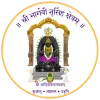śrī bhārgavī narasimha
kṣetra

Śri bhārgavī nārasiṁha sannidhi is a svayaṁvyakta kṣetra whose origin dates back to the beginning of times.
This kṣetra is in kunjalu grama of brahmavara hobli udupi taluk in karnataka.
The mūlasannidhāna of bhagavān śrīmannārasiṁha and bhagavatī śrī bhārgavī durgāparameśvarī, is amidst a nāgavana known as the ādiśeṣa nāgavana. The remaining eight forms of the navadurgā rūpā-s viz., 1) mahiṣamardinī, 2) mahākālī, 3) mahāvidyā, 4) sunandā / vindhyavāsinī, 5) raktadantikā, 6) śatākṣī / śākambarī / durgā, 7) bhīmādevī, and 8) bhrāmarī have sannidhi-s in specific locations in the forests around belonging to the kṣetra.
The kṣetra is also the abode of svayambhū sannidhi-s of śrī mukhyprāṇa, śrī ādiśeṣa, śrī paramaśiva-rudra, and śrī mahāgaṇapati as the parivāra devatā-s. This the kuladevatā kṣetra for trayārṣeya and kevala bhārgava-s whose ancestry roots can be traced back to bhṛgu kaccha (current Bharuch) of gujarat.
mūlasannidhāna
bhagavati śrī bhārgavī durgāparameśvarī sameta bhagavān śrīmannṛsimha

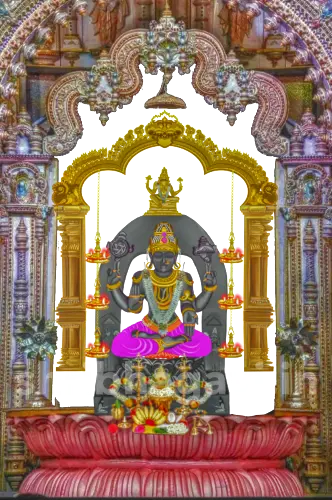
Parātpara-parameśvara-śrīmannārāyaṇa and his causelessly compassionate mūlaśakti who is the penultimate cause of the cyclic sṛṣṭi (~ creation), sthiti (~ sustenance), saṁhāra (~ dissolution), jñāna (~ wisdom), ajñāna (~ ignorance), bandha (~ bondage), and mokṣa (~ final emancipation) appeared and resides of their own volition at the kṣetra as the sannidhāna capable of effacing even the most deep-rooted prarabdha-s of all those that surrender unto the sannidhāna as the sole refuge.
concise sthaḷa purāṇa

Once, during the svayambhuva manvantara, the deva-s revelled in amarāvati and over time developed pride coming to believe that their individual powers alone is responsible for the creation, sustenance, dissolution, and governance of the universe. To quell their pride, the parabrahman śrīmannārāyaṇa manifests as a yakṣa of unfathomable effulgence amidst the devas and challenges them to destroy few blades of dried grass laid before. The deva-s agni, pravara vayu, et al try and fail to have any impact on the dried blades of grass despite applying all their prowess, and as soon as indra arrives śrīmannārāyaṇa in the form yakṣa disappears.
Confused, indra learns from pārvatī who appears there to caution indra that owing to their display of pride and vanity before the very parabrahman śrīmannārāyaṇa the deva-s would soon lose their sovereignty over the devaloka. Soon, empowered by brahma’s boon of invincibility, kuñjarāsura, asura with an elephantine head, raids the devaloka driving the deva-s out and assuming all their respective positions for himself.
Realizing their folly, the deva-s surrender and supplicate to the śrīmahādevī who out of limitless benevolence appears as śrījagaddhātrī mahādevī and vanquishes the asura playfully subdueing him with the right foot of her mount – the lion – and reestablishes the deva-s back to their positions. Blessing the deva-s and kuñjarāsura’s last wish śrīdevī chose to permanently reside in the kṣetra where she emerged out of her own volition.
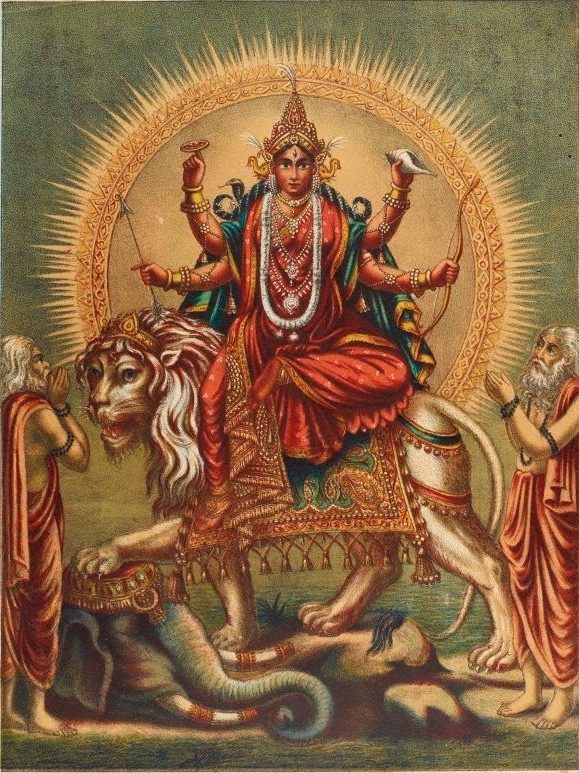
tīrtha-s & puṣkariṇī

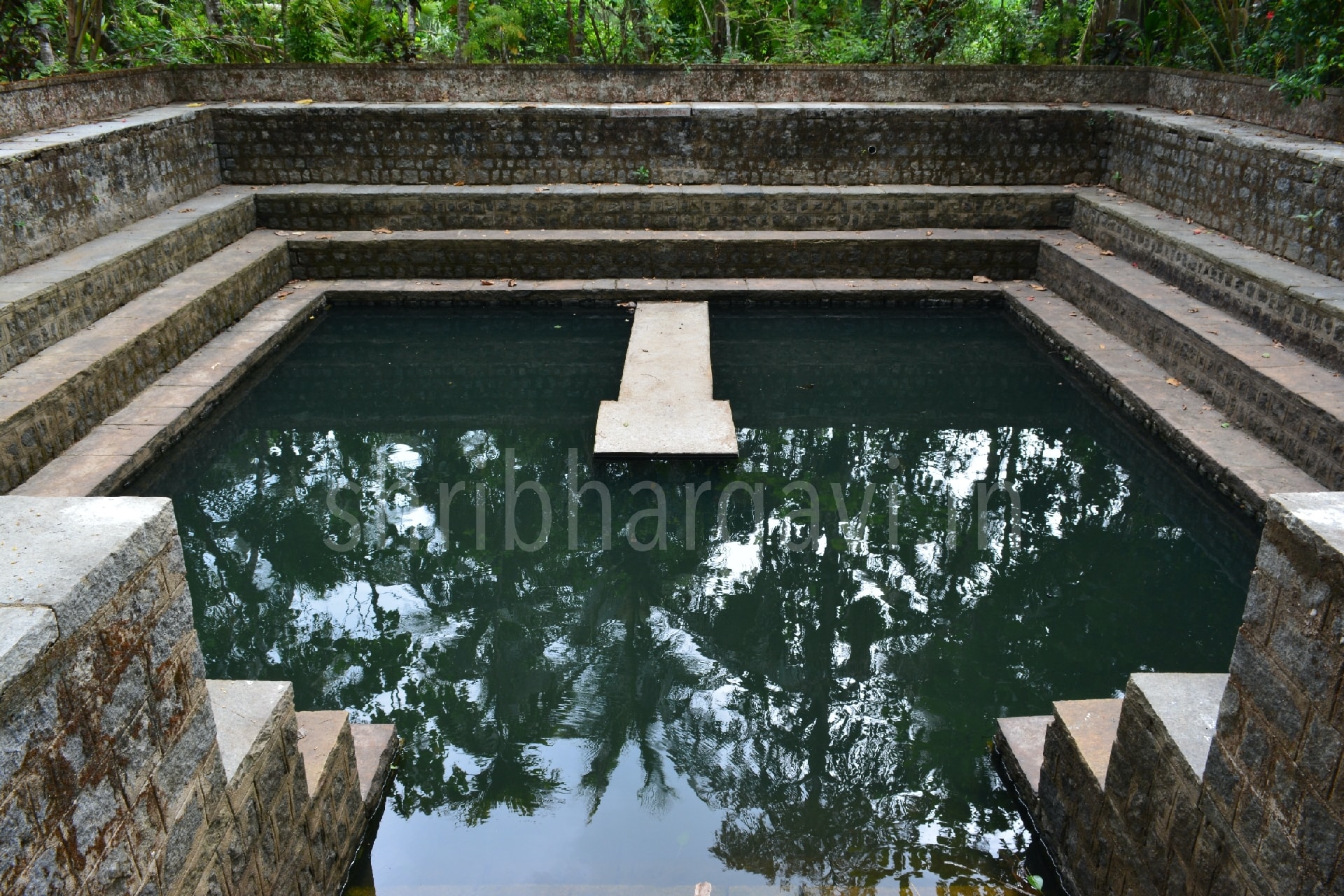
There are several tīrthas associated with the kṣétra with one lying about 120 meters due east of the garbhagrha. This is a small natural lake formed amidst rocky extrusions. There is also a sānnidhya of a parivara mātṛkā devatā close by.
Another tīrtha lies to the south of the sannidhi which was perhaps a rock edifice with natural water source which has now been converted into a well. The ancient vigrahas of the kṣetra are said to have been immersed into the erstwhile lake but since the olden vigrahas were made of limestone they have over the years become irrecoverable. This well also provided water for the daily ārādhana-s until the kṣetra puṣkariṇī was constructed.
The third one is to the west, about 100 meters from the garbhagrha which is a nāga tṝtha and is simply a well, probably converted from a natural rock edifice spring which doesn’t dry even during peak summer.
There probably is/was another tīrtha to the north which is now lost to us.
Since none of these tirtha-s are currently available for the purpose of daily ārādhana-s, having made a prarthna to śrībhārgavīnarasimha, in the kali year 5120 (2019CE) an effort was made to obtain some natural water resource exclusively for the temple at the northeast corner of the temple as is the common practice, only to find hard granite at less than 8 feet depth. Subsequently, in the kali year 5123 (2021CE) another prarthana was submitted seeking guidance regarding the appropriate place for obtaining water. Śrī bhagavtī indicated that western side of the garbhagrha would yield a tirtha following which excavations were made. After about three days of excavation using JCB excavators and at around a depth of 20 feet water emerged from amidst porous rocks. Further excavations were made in the kali year 5124 (2022CE) in order to ensure sufficient water even during peak summer.
